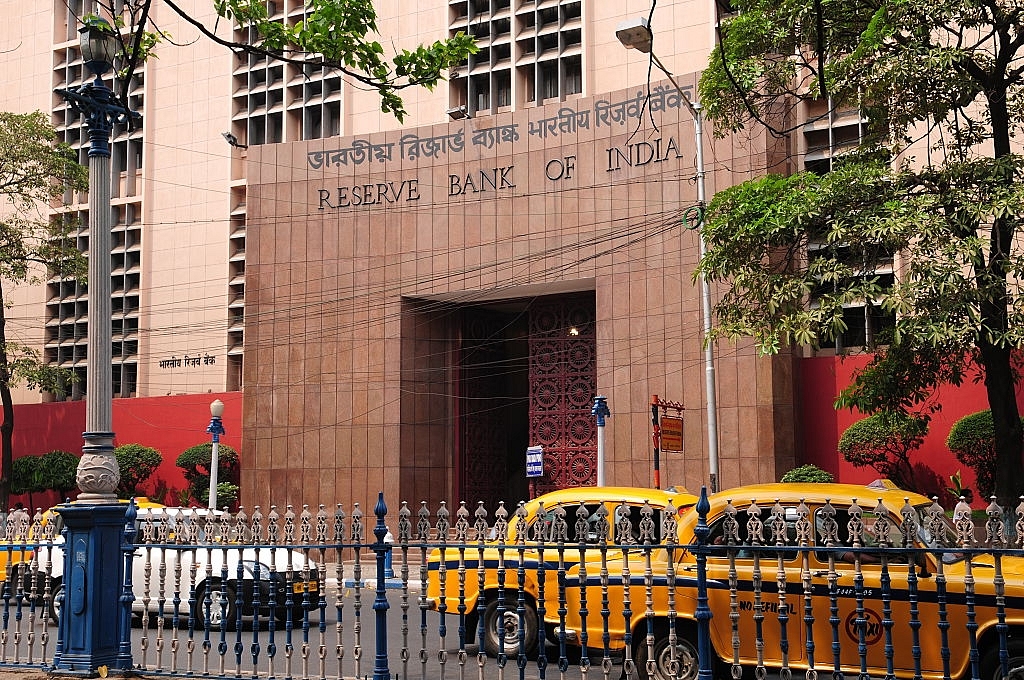Economy
Making More Space For Bank Lending
- The RBI has cut the repo rate by 25 basis points to 5.75 per cent.
- With measures like this, the economy may look to recoup from the slump of Q4.

RBI building in Kolkata. (Indranil Bhoumik/Mint via Getty Images)
Looking to the slowdown in Gross Domestic Product (GDP) growth during Q4 of FY 2018-19, the Reserve Bank of India (RBI) has intensified its efforts to stimulate growth by cutting the repo rate by 25 basis points in quick succession, to 5.75 per cent, the lowest since 2010. But more significant than the repo rate cut is the change in the stance of monetary policy from ‘Calibrated tightening‘ to ‘neutral’ in February 2019 and now to ‘accommodative’, reflecting the flexibility of the RBI.
Such an industry-friendly policy stance of the RBI opens up potential future rate cuts depending upon macroeconomic developments. When the average GDP growth stands moderated to 6.8 per cent for 2018-19, the economy may soon recoup from the slump of Q4, aided among others, by an RBI policy stimulus. The revised growth outlook of RBI of 7 per cent down from 7.2 per cent is a pointer to the prospects of recovery, keeping in view the outlook of the World Bank that estimates the growth to perk up to 7.5 per cent during the fiscal.
Since growth impulses have weakened significantly as reflected in a further widening of the output gap compared with the April 2019 policy, the current policy action should augur well for the economy and restore confidence. Moreover, even in truncated bank credit growth at 12.7 per cent year-on-year (24 May 2019), the flow of credit is moving towards large industries and is muted for Micro, Small and Medium industries (MSME), the most employment-intensive sector.
Similarly, the RBI’s ‘Order books, inventory and capacity utilization survey’ (OBICUS) indicates capacity utilisation at 77 per cent, a sign of future potentiality. With RBI linking group and single borrower exposure limits to Tier –I (core capital) in place of total capital, banks will have to eventually phase out exposure to large borrowers and divert credit to the MSME, retail and agriculture sectors. State Bank of India (SBI), while extending the benefit of current rate cut to its cash credit and overdraft customers, it is proposing to link home loan products to repo-linked lending rate (RLLR) from 1 July 2019 to stimulate retail lending.
Currently, bank credit-to-GDP Ratio (CGR) is at a low of 52 per cent in March 2018, down from 60 per cent in 2014. It compares abysmally low with a CGR of at 215 in 2016. The global average CGR is 104. The CGR of some countries will be interesting to assess lending appetite of the banking system. For example, CGR of Japan (169), South Korea (144), Malaysia (119), Singapore (128), South Africa (148), Thailand (145), UK (135) and US (191). Unless the banking system is able to support trade and industry with a steep rise in credit flow, the potentiality of growth cannot be fully harnessed.
The RBI has also set up an internal working group to review the liquidity management framework with a view to simplifying the current system and to communicate its objective of quantitative measures and toolkit of liquidity management. With Liquidity Coverage ratio (LCR) and Net Stable Funding Ratio (NSFR) well in place in banks in sync with Basel – III standards, the recent liquidity mayhem in Non Banking Financial Companies (NBFCs) and its ramifications on the financial markets clearly spells out the importance of liquidity management.
With NBFCs unable to lend aggressively, banks should pitch in to expand credit with diverse leeway provided by RBI to stimulate the economy. With RBI having issued revised norms to deal with stressed assets in place of its 12 February 2018 circular, banks should learn to manage bad loans without impinging upon the speed of fresh lending. Bad loan management and fresh lending activity should be two separate branches that should not be allowed to clash and impede each other. The lending space provided by the RBI needs to be leveraged to improve profitability, eventually paving the way for a clean and strong balance sheet.
Introducing ElectionsHQ + 50 Ground Reports Project
The 2024 elections might seem easy to guess, but there are some important questions that shouldn't be missed.
Do freebies still sway voters? Do people prioritise infrastructure when voting? How will Punjab vote?
The answers to these questions provide great insights into where we, as a country, are headed in the years to come.
Swarajya is starting a project with an aim to do 50 solid ground stories and a smart commentary service on WhatsApp, a one-of-a-kind. We'd love your support during this election season.
Click below to contribute.
Latest